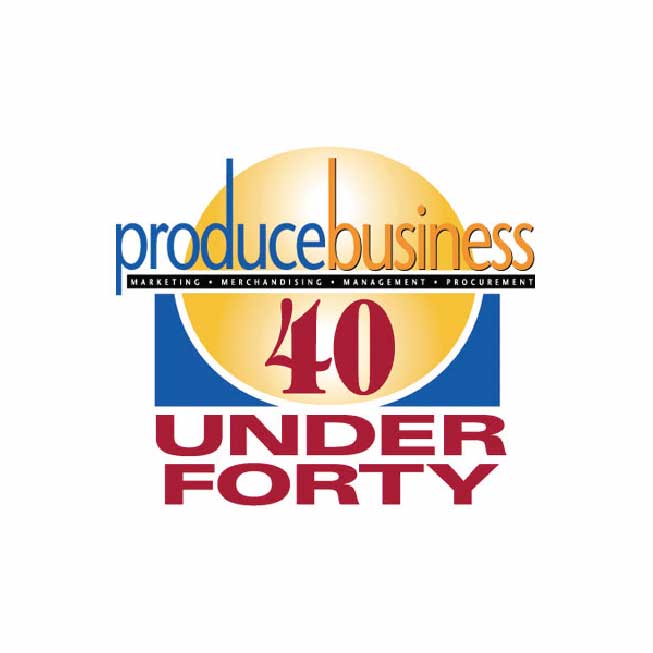Consumer Packaging, Increases Shelf Life, Store Sales
November 15, 2017 | 14 min to read
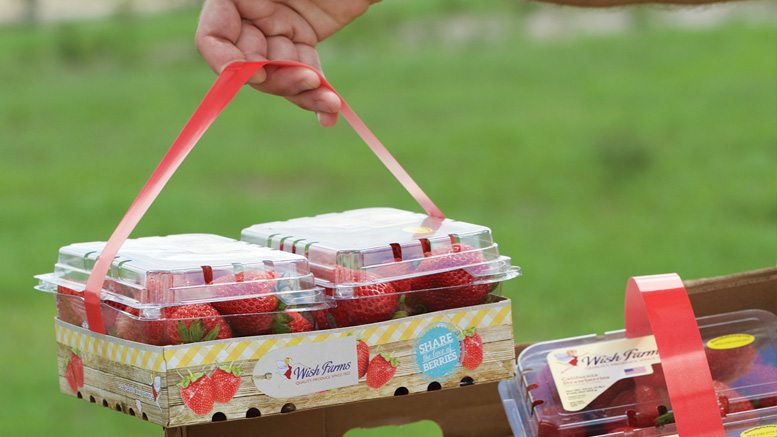

New offerings fortify marketing against non-produce snacks.
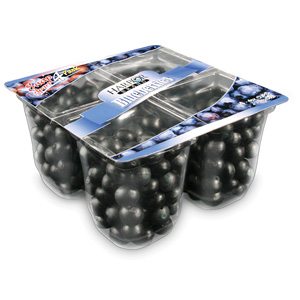
Photo Courtesy of Clear Lam
Proper packaging is of critical importance for produce companies to communicate their messages to consumers. As many produce brands do not possess substantial marketing and advertising budgets, brand packaging is one of the few ways they can communicate directly to the end consumer. It is one of the biggest ways to create brand awareness and loyalty in produce, according to grower-shippers and distributors.
With hundreds of items competing for shoppers’ attention and shelf space in the produce department, packaging can help differentiate a company’s product from competitors and encourage consumers to place their products in their shopping carts.
Packaging has always been used as a sales tool. Because of the difficulty of retailers sourcing qualified and loyal workers, effective packaging is even more critical today, as it helps provide uniformity that allows workers to properly match prices at the register.
Convenience is Key
Convenience packaging is among the most popular packaging innovations. Microwaveable and steam bags remove steps and trim meal preparation time, making it easier for busy people to include nutritious vegetable side dishes in their meals. Because of its grab-and-go and resealable properties, a gusset bag, which appears in various sizes, is popular and appealing. The packaging typically features vibrant and attractive graphics while maintaining a clear visual of the packaged product, observes Nicole Brandt, senior marketing manager of Robinson Fresh in Eden Prairie, MN.
Resealable and/or quality packaging increases shelf life for consumers and is a key added-value for consumers. Resealable bags, cartons and clamshells that use quality materials with proper ventilation can increase product longevity, which ultimately helps shoppers feel better about their purchases, says Brandt.
Single-serve and ready-to-eat packs, whether “perfectly portioned” smaller packs of berries or variety snack packs including apple slices, grapes, almonds and cheese, are in high demand by consumers.
The value-added packs also generate bigger register rings. “Those products, in particular, typically have higher margins and are more impulse — rather than planned — purchases,” says Brandt. “Thus, it adds incrementally to those brands and products.”
The convenience factors added to much of today’s packaging, including ventilation or microwave-ability, increase repeat sales within the brands and help make consumers’ lives easier. In an industry where brand loyalty is difficult to achieve for most produce companies, Brandt says convenience through packaging innovation can help develop strong consumer brand preference.
The more convenient packaging, particularly the grab-and-go items, including smaller packages of fruits and nuts, can help the produce industry better compete against less healthy snacks, including potato chips, says Kurt Zuhlke Jr., president and chief executive of Kurt Zuhlke & Associates, which operates from Bangor, PA. Many workplaces, educational institutions and gyms carry produce in dispensing machines, including apples, oranges and packages of nuts. “There’s a huge push for grab-and-go,” says Zuhlke.
Schur Star Systems, based in Carlsbad, CA, plans to showcase its new Zip Pop microwaveable stand-up pouches at the Produce Marketing Association’s Fresh Summit Convention & Expo in New Orleans this month. The bags include two compartments separated by a unique zipper. One compartment could hold produce such as Brussels sprouts, asparagus and potatoes while the top compartment would feature a spice mix that blends with the produce during microwaving.
“Convenience packaging comprises regular handle bags, but also includes a more creative and innovative direction such as shaped bags and performance bags like the Zip Pop product line,” says Hans Christian Schur, chief executive. “We want to pursue convenience packaging more in the fresh produce segment and work with our customers to develop unique and new concepts. We live in a fast-paced world where customers want their food to taste good but be provided to them faster. Convenience packaging can be a vehicle for brand owners to achieve what the consumer wants.”
Marketing Against Other Produce
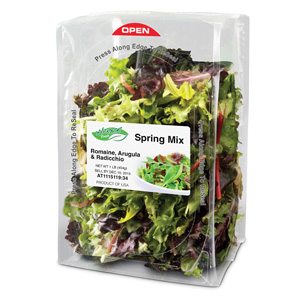

Photo Courtesy of Clear Lam
Packaging is critical in competing against other non-produce snacks, says Roman Forowycz, chief marketing officer of the Elk Grove Village, IL-based Clear Lam Division of Sonoco Global Flexible Packaging Group. “Studies have been conducted in recent years that show consumers will increase their consumption of produce if it’s delivered in convenient formats,” he says. “Consumers are starting to replace salty, fried snacks with easy-to-use and convenient produce options that come in little snack trays or bags.”
For effective packaging, marketers must consider the practical use of the packaging. In addition to “sex appeal,” to ensure purchases, packaging must possess a practical application, says Zuhlke. Labels are easier to make changes versus printing directly onto the packaging material, he says. Packaging must also properly carry the product to prevent shrink. Product also must not be overweight, which could create other problems. “Retailers want good quality products with packaging that protects the product,” says Zuhlke. “Packaging must also perform on a unit price basis, so every registration going across the register scanners is correct.”
“The product usually dictates what options you have when it comes to packaging, followed closely by ease of use and customer preference. Cost has a huge impact, as well as how and where it will be merchandised.”
— Roy Ferguson, Chantler Packaging
For marketing, packaging is now one of the primary sales considerations, including the packaging’s appearance and consumer appeal, according to Zuhlke. Its convenience, reusability and how it’s handled shipping from one spot to another to prevent losing its value in terms of deterioration are other important considerations, he notes.
A big trend in packaging is sustainability. Forward-thinking packaging companies must provide growers options, says Sara Lozano, marketing manager of the Watsonville, CA-based Sambrailo Packaging. Packaging isn’t only limited to plastic.
In March, Sambrailo introduced ReadyCycle, an environmentally conscious packaging line developed for the existing paperboard recycle stream. ReadyCycle, which uses no wax, labels or added adhesives, can be printed on all surfaces instead of only the top and bottom labels on plastic clamshells. Low tooling costs allow for design flexibility and small production runs, which also affords shippers to run customizable promotions, says Lozano. The recyclable packaging was designed to provide an alternative for plastic clamshells and for growers looking to align themselves with retailers and customers wanting to reduce their plastic waste.
Using Marketing Space
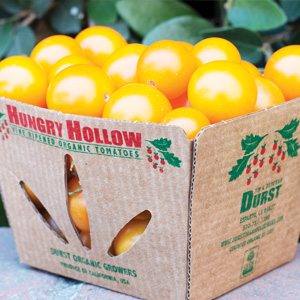

Photo Courtesy of Sambrailo
New types of packaging, like ReadyCycle, can allow marketers to more effectively use marketing space, says Lozano. As packaging is usually a company’s first impression on shoppers, proper use of packaging is critical. “Packaging is able to set the tone for who your company is, why your company does what it does and what your company stands for. Now more than ever, consumers are looking for how they can connect with you and your brand, and what it means to them and how it relates back to them.”
Packaging is headed toward stand-up pouches to hold grapes, cherries, pears, apples and stone fruit, says Roy Ferguson, chief executive of Chantler Packaging in Mississagua, Ontario, Canada. Portion sizes to meet consumer needs, keeping product fresher longer and take-out food containers for home meal replacement are other trends, he says. The broader use of multi-layer films offering advantages such as longer shelf life and a smaller carbon footprint are other forms of packaging in the pipeline, says Ferguson.
“From my perspective, there are numerous incremental changes or product extensions made to existing packaging,” he says. “The product usually dictates what options you have when it comes to the packaging, followed closely by ease of use and then customer preference. Cost has a huge impact, as well as how and where it will be merchandised,” says Ferguson.
Though color trends change yearly, red is the color that distorts the eye the most followed by a combination of blue and yellow, he says. While Baby Boomers and Millennials possess different packaging preferences, consumers across many different constituencies prefer produce packaging that is effective in “shopability” and possesses user-friendliness, says Ian Ferguson, Chantler’s head of operations.
A produce company should create a strong master brand identity and roll out the master brand across a company’s products. All products should possess similar looks, but marketers should use color to cue the shopper as to the bag’s contents. “The goal is to grow your master brand and get consumers to trust it,” says Ian Ferguson. “Once consumers trust the master brand, because they like ABC Produce’s tomatoes, they are more likely to try ABC’s cucumbers. Additionally, not enough attention is paid to telling consumers what they can do with products and what the produce tastes like.”
Communication Key to Success
It’s critical for produce companies to use packaging to communicate their stories, says Aaron Fox, president of Fox Solutions, a McAllen, TX-based produce packaging supplier. Consumers are seeking authentic, trustworthy brands. Produce company messages should reflect their vision and mission, what messages they are trying to convey to their target audience and what their product can bring into the consumer’s life, he says.
In the produce department, where there are hundreds of options for consumers to choose, packaging design is one of the most important factors in attracting shopper interest. The average person gets distracted in 8 seconds, though a mere 2.8 seconds is enough to distract some people, says Fox. “With so many produce items surrounding a consumer, you need to make sure your packaging grabs their attention and makes them curious, wanting to know more about the product inside,” he says. “That is when the message you are conveying on your packaging comes into play.”
Eye appeal is critical, says Scott Tyo, category business manager with Tops Markets, headquartered in Williamsville, NY. “Customers buy produce with their eyes, so it has to look attractive and also be functional,” says Tyo, who believes produce companies can make their products stand out by providing product usage information on their labels. “We look for something attractive, colorful and that allows our customers to see the product clearly and tell a story or add education,” he says. “Offering larger options can also help increase produce sales and consumption.”
Karen Caplan, president and chief executive of Los Alamitos, CA-based Frieda’s Inc., observes how many grower-shippers limit their packaging creativity to only featuring their logo and a photo of their farm on their packaging. “The package creates a great opportunity to put some messaging on about the flavor, shelf life and the product’s unique quality,” she says. “You have to validate what’s important to consumers. Packaging is a huge marketing opportunity.”
To capture shoppers’ attention, a company’s packaging must reflect what appeals to its target audience. Companies should conduct research to see what colors, typography and graphics appeal to its primary audience. Research should also show what is important to consumers, whether it be product application, health benefits or recipes, Fox advises.
Providing shoppers the ability to connect with the marketer is something that should be considered in packaging design, says Sambrailo Packaging’s Lozano. “It’s important to be able to communicate your story in order to connect with consumers,” she says. In addition to sustainability, packaging must also be consumer-friendly. It must be appealing and should showcase the product and brand. “People find connecting with brands very important,” says Lozano. “Consumers want to truly know what your brand is about.”
Telling the Story
Today’s packaging is experiencing a large shift in allowing grower-shippers to convey stories of their farms and connect with consumers on an emotional level, says Lozano. “Packaging gives grower-shippers the ability to showcase the pride that goes into their product,” she says. “It allows it to become a billboard and a story piece, which is a huge point of differentiation. There’s only so much retail shelf space. The ability to brand fresh produce 360 degrees can be a game-changer on the shelf.”
User-friendliness and convenience top the list of consumer packaging trends, says Fox.
“With consumers busier than ever, packaging that reflects a product’s easy and fast use is what is top of mind,” he says. Health is also a big trend with consumers. If a company’s packaging reflects the look of “healthy,” shoppers are more likely to pick up the product and want to know more about it, says Fox.
Packaging remains a critical part of the consumer experience. In the past, packaging was considered more of an afterthought. Today, however, successful products typically incorporate package design early in the development process. “Consumers expect packaging to help the product stay fresh, and in many cases, act as a serving dish, provide reclosing and easy storage while not being harmful to the environment,” says Clear Lam’s Forowycz.
“Packaging gives grower-shippers the ability to showcase the pride that goes into their product. It allows it to become a billboard and a story piece, which is a huge point of differentiation.”
— Sara Lozano, Sambrailo Packaging
In the future, packaging will play a more active role in preserving product freshness over longer periods of time, says Forowycz. “Consumers are demanding fresh products that are easy to store, consume and dispose,” he says.
Peel-and-reseal films, which provide better reclosing as compared to traditional rigid lids, are becoming more popular. Snap-apart snack kits allow for convenient portion control servings. Additionally, there will be special types of packaging that will help to identify products that may be unsafe to consume, says Forowycz.
Increase Sales
Gary Wishnatzki, owner of Wish Farms in Plant City, FL, sees the future bringing new packaging concepts that can help retailers sell more product. More opportunities to merchandise product in filmed sealed lids versus hinged lids will emerge, he says. As robotics become a bigger part of fruit harvesting, such developments will become crucial, he adds.
Wish Farms has introduced a Take 2 tray which holds two 1-pound clamshells of berries. The pack offers retailers more versatility and encourages shoppers to purchase two clamshells instead of one. “If the 2-pounders aren’t selling, retailers can revert to the single clamshell, says Wishnatzki. “There are a lot of opportunities with the graphics. Retailers can promote different holidays and use them in an Easter basket, as well as feature recipes. There’s a lot of different things we can encourage retailers to do.”
Wishnatzki says he’s seen the trend with other commodities, including apples, pears and oranges, involving shippers experimenting with bags and different packaging to provide more messaging and help move more product.
Companies Redesign Packaging For Shoppers Attention, Reducing Waste
Produce growers and marketers use a variety of packaging to communicate their messages to shoppers. Packaging remains vital to attracting consumer attention.
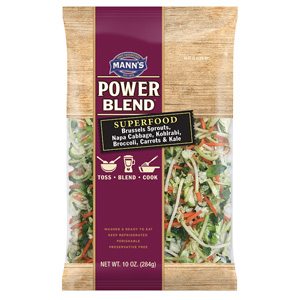

Photo Courtesy of Mann Packing
Storytelling is a key part of packaging and has changed the way Stemilt Growers, which grows and ships apples, pears and cherries from Wenatchee, WA, sells cherries. Since 2013, the company has marketed premium cherries through Kyle’s Pick, for Kyle Mathison, co-owner. Stemilt’s Half-Mile Closer to the Moon program promotes cherries grown a half-mile above sea level. The program uses packaging to engage shoppers with interesting story lines.
“People want to know who grows their food and want a message from the grower,” says Roger Pepperl, director of marketing. “Creating these storylines, tying them into your packaging and merchandising, is super important. If you don’t tell the trade you have a better product, how will you get it into the door for your consumers if you don’t start out with a good story?”
At Stemilt, packaging design is done in-house. When creating packaging for its Skylar Rae cherries, it wanted to create attention. The inverted strawberry clamshell makes the bottom the top. The label stands out in the middle of the cherries’ bright color. Unlike a subpar jewelry box containing expensive jewelry, the classier clamshells help change shoppers’ perceptions of how an expensive premium cherry should look. “You want a nice box when you buy a piece of jewelry,” says Pepperl. “When you buy a nice, expensive cherry, you want that package to carry that same emotional feeling of the cherry. That’s what a package has to do. It has to carry the value proposition.”
Stemilt also places much attention in designing cartons that hold its bulk and packaged tree fruit. Rave, a new apple, is shipped in burning fuchsia red boxes which “really pops” and “violates your eyes,” making shoppers inquiring about the product, says Pepperl. Stemilt markets its Piñata apple, a blend of heirloom varieties, in colorful boxes featuring an apple floating in a tropical ocean with a palm tree sticking out of the apple’s top. The eye-catching cartons promote the fruit as “Piñata: A Surprise for your Taste Buds” and “Classic Apple Flavors with a Tropical Twist.”
During the dreary January and February shopping months, retailers erected displays featuring palm trees and cross merchandised them in end cap displays with pineapples. The tropical-themed promotions generated high purchasing levels and helped change the way apples are sold, says Pepperl. “It’s really important in a store environment to have a nice carton that carries that consumer message prior to sale,” he says. “Even when it comes into a grocers’ warehouse, it creates attention. You have to put it in a carton anyway, so as long as you have a carton, why not hit a home run with it? Let’s do the carton right and deliver messages to whomever we can.”
Packaging to Match Use
Research conducted by Mann Packing Co., a Salinas, CA-based supplier of fresh and fresh-cut vegetables, showed what consumers desire in fresh item packaging. The study found 92 percent of those surveyed said they did not use Mann’s black tray lids for serving, per the package design. In redesigning its vegetable platters/trays, the company removed the package’s black plastic lid. Mann’s new large tray has 38 percent less packaging material than the old tray, 43 percent less than its smaller trays and 50 percent less packaging than other trays on the market, says Jacob Shafer, senior marketing and communications specialist.
“Offering something a consumer can use has always been an effective tool,” he says. “For us, it’s all about convenience. Packaging features such as easy opening, being reclosable and portable continue to drive our packaging innovation.” All of Mann’s corrugated and plastic packaging is recycled, eliminating Mann’s packaging waste. Its trays reduce 1.4 million pounds of plastic from its landfills annually, says Shafer.
Mastronardi Produce Ltd., based in Kingsville, Ontario, Canada, which markets through its Sunset brand, uses many ways to communicate the benefits of the greenhouse tomatoes, peppers and cucumbers it grows and ships. “For benefit messages to be effective, they must be relevant to a company’s target consumer and distinct to its brand,” says Paul Mastronardi, president and chief executive. “On-pack recipes are one way of capturing consumers’ attention and inspiring them to go beyond the norm and experiment with produce.”
Mastronardi points to its new Sunset Chef Inspired series, which is promoted on Sunset brands. The premium line features recipes from celebrity chef Roger Mooking and shows consumers interesting ways they can use produce to elevate their meals.
Article 9 of 41

